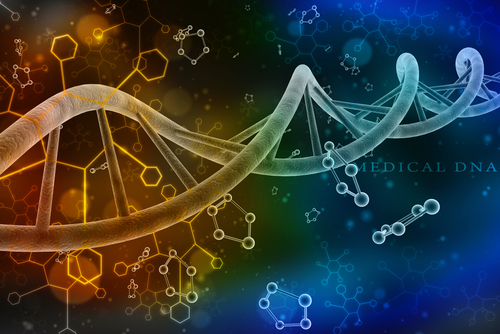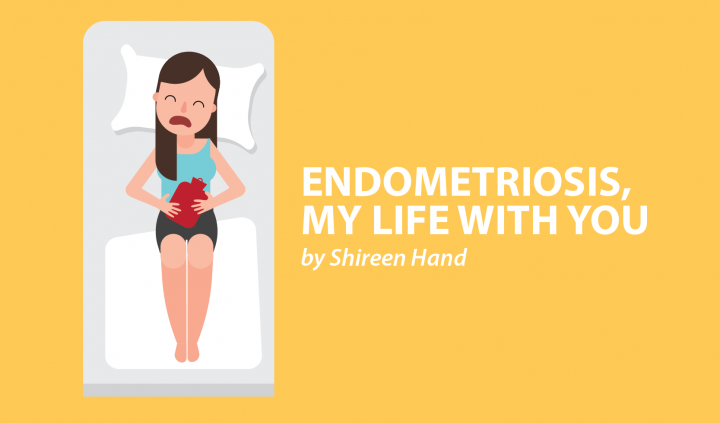1. Endometriosis occurs when endometrium is found growing outside of the uterus.
False! Many resources will tell you that endometriosis occurs when endometrium (the mucous membrane that lines the inside of the uterus) is found growing outside of this area. This is incorrect. Endometriosis occurs when tissue similar to the lining of the uterus is found growing outside of the womb, usually in the pelvis, although it can be found elsewhere in the body.
2. Isn’t endometriosis just a bad period?
False! Menstruation is defined as “when blood and tissue come out of your vagina” and is a natural process that all women will experience as their bodies physically mature. Any discomfort should leave after a three- to eight-day period. Endometriosis is a painful, chronic, gynecological disease that affects one in 10 women. The pain of endometriosis can correlate with the menstrual cycle, and this is where confusion can be caused. But it may also be experienced at other times during your cycle including during or after sex, or during internal examinations, ovulation, and bladder or bowel movements.
3. Painful periods are normal.
False! We cannot get away from the old beliefs that period pain is “normal,” or that it’s “in our heads,” or to “get on with it because it’s a part of being a woman.” Period pain should never interfere with your daily life. If it does, then it isn’t normal.
4. Endometriosis can be cured.
False! There is no cure for endometriosis. Pregnancy and hormonal treatments suppress the symptoms of endometriosis but they do not eradicate the disease, and symptoms will usually return. Some women may only experience symptoms of endometriosis post childbirth. Endometriosis can even still occur past menopause. Surgery can be performed to remove endometriosis, but it can still return.
Hysterectomy is most commonly reported as a cure for endometriosis, but, it isn’t. However, endometrial tissue can also grow in the muscle layers of the wall of the womb (adenomyosis), and the only way to eradicate this is via hysterectomy.
5. I tried this treatment and it worked for me so it will definitely work for you.
False! It is always worth investigating every single treatment option that is suggested to you, whether that be surgery, hormonal treatments, pain relief, dietary changes, exercise, etc. But because endometriosis occurs so differently in each and every one of us, is situated in different areas, and causes different symptoms, and because our bodies are all so different, the same treatments will always have different results.
6. You’re too young to have endometriosis.
False! Teenagers and women in their 20s are not too young to have endometriosis! Endometriosis symptoms may start to emerge during the teenage years, but they are often dismissed by medical professionals as girls not yet knowing their bodies. This then leads to a later diagnosis in the 20s or 30s.
7. I have stage IV endometriosis, so the pain is far worse than your stage I endometriosis.
False! Endometriosis is often classified as mild, moderate, or severe — stages I to IV. These stages provide a useful guideline, but they also have limitations, as the amount of endometriosis does not always correspond to the amount of pain and discomfort. A small amount of endometriosis can be more painful than severe endometriosis. It largely depends on where the endometriosis is actually growing inside the body.
8. I have endometriosis so I will never be able to have children.
False! Endometriosis does not automatically mean you are infertile, although infertility can be a symptom of endometriosis. It is estimated that 30 to 40 percent of women with endometriosis are subfertile. Infertility is not always caused by endometriosis — it can be due to many other factors.
9. You have caused endometriosis by your lifestyle choices.
False! The actual cause of endometriosis is unknown. There are many theories including estrogen production, retrograde menstruation, genetic predisposition, lymphatic or circulatory spread, immune dysfunction, metaplasia, and even environmental causes. But none fully explain why the condition occurs. It is possible that a combination of these factors could cause endometriosis to develop.
Abortion, wearing tampons, sexually transmitted diseases (STDs), psychological trauma in early life, douching, diet, lack of exercise, contraceptives, the color of your skin, and sexual promiscuity do not cause endometriosis and there is no way of preventing the disease.
10. Endometriosis means I have cancer, right?
False! Endometriosis is not an infection, it isn’t contagious, and it isn’t cancer. However, every single benign tissue in our bodies has the potential to turn into cancer. Therefore, some argue that deposits of endometriosis could turn into cancer. But the risk is low.
You can follow more of my journey over at www.emlwy.com.
***
Note: Endometriosis News is strictly a news and information website about the disease. It does not provide medical advice, diagnosis, or treatment. This content is not intended to be a substitute for professional medical advice, diagnosis, or treatment. Always seek the advice of your physician or other qualified health provider with any questions you may have regarding a medical condition. Never disregard professional medical advice or delay in seeking it because of something you have read on this website. The opinions expressed in this column are not those of Endometriosis News or its parent company, BioNews Services, and are intended to spark discussion about issues pertaining to endometriosis.


